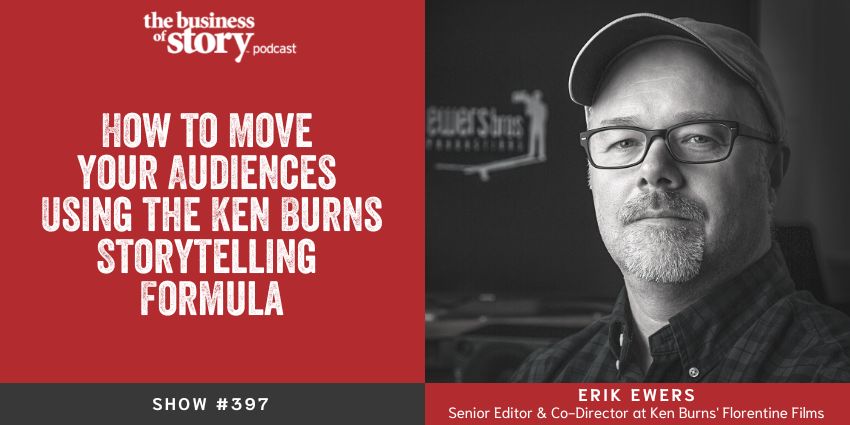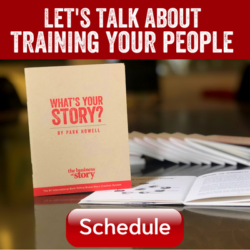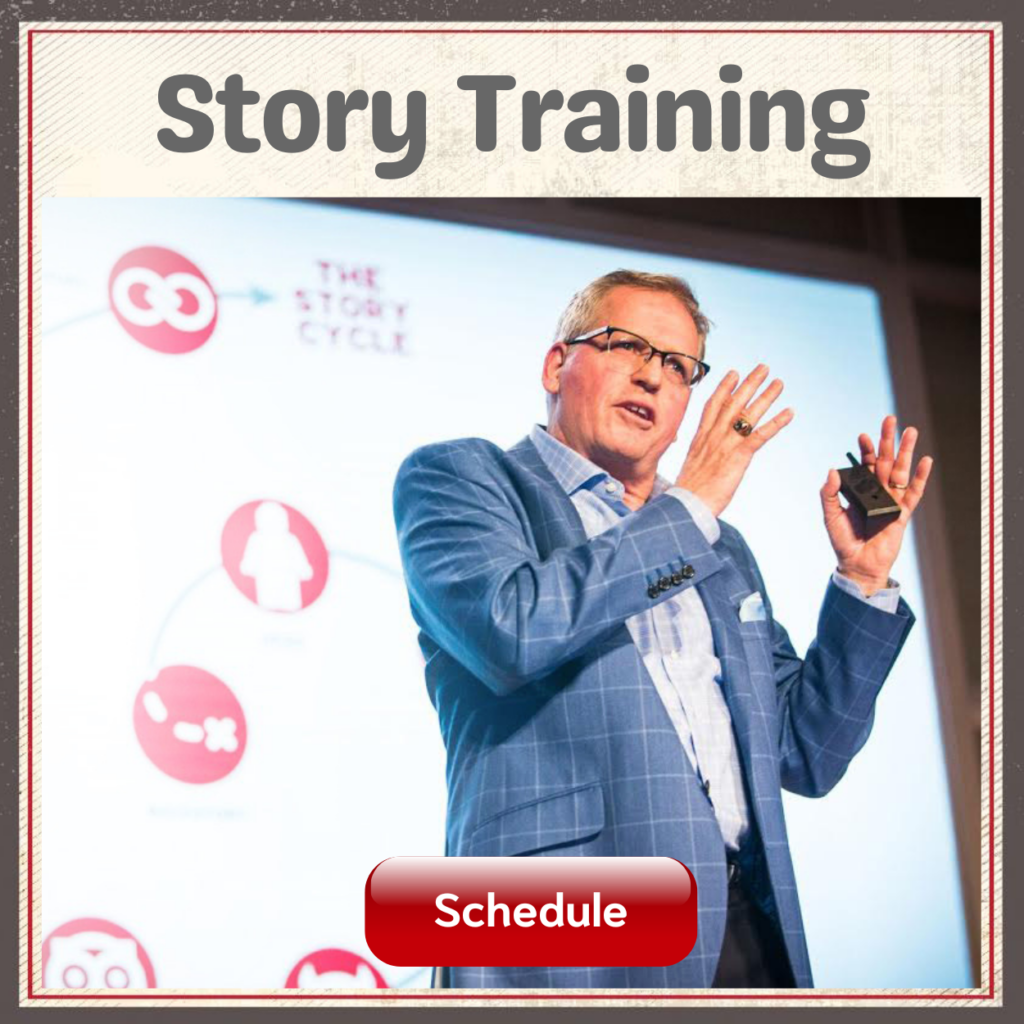
#397: How to Move Your Audiences Using the Ken Burns Storytelling Formula
You know how important narrative frameworks like the ABT (And, But, Therefore) are to compelling storytelling, especially in leadership communications. Without proper structure, your stories are a jumbled mess.
But even if you have narrative structure down, what are the other components that will make your stories irresistible, like triggering emotion?
We explored that question on this episode of The Business of Story with Erik Ewers, Senior Editor and Co-Director with Ken Burns at Florentine Films and Co-Founder of Ewers Brothers Productions.
Erik’s latest film, Hiding in Plain Sight: Youth Mental Illness, is a production he co-directed with his brother Chris Ewers in conjunction with Ken Burns that premiered on PBS in June 2022.
Erik has worked at Florentine Films for 30 years joining the company in 1991, weeks after the epic 9-part Civil War series premiered on PBS to some 40 million viewers. That made Burns and the Ken Burns Effect to motion editing with still images part of the American storytelling lexicon.
Erik is co-Director and editor on nearly all of Ken’s single and multi-episodic films, including “Baseball,” “The War,” “The Vietnam War,” “Country Music,” “Ernest Hemingway” and “Jazz.”
In 2015, Erik collaborated with Ken to create the two-hour PBS film The Mayo Clinic: Faith, Hope, Science, serving as director and editor. Their partnership continues in an upcoming miniseries on America’s adult mental health crisis, and a documentary biography of Henry David Thoreau.
Erik has been nominated for more than seven personal and program Emmy Awards and has received one editing Emmy and three program Emmys, as well as two prestigious ACE Eddie Award nominations and one ACE for “Best Edited Documentary of 2015.”
He is an expert in all aspects of filmmaking, having served as music producer, writer, director, film producer, picture editor, and sound effects, music, and dialogue editor.
Erik says that storytelling is the very foundation of all of their films. Picture, music, and sound effects all revolve around it. Rather than a focus on chronology and biography, they focus on stories of human emotion, as that is what provides us with the opportunity to truly connect and relate to the subject in personal and meaningful ways. Emotional experiences are timeless and universal, whether the subject’s story occurred centuries ago, or yesterday.
“In 1998, I saw the movie “Saving Private Ryan,” which touted a new technology called Dolby 5.1 Surround. I slouched in my seat in fear as bullets whizzed by my head, and explosions went off behind me. I saw how the use of this technology provides such an incredible vicarious emotional experience and was determined to do it myself. I was 10 years into working with Ken Burns by then, I had solely created his post-production sound department, where all sound design & editing was done in-house.
A few years later, I stood before Tom Hanks at the Emmy Awards to accept the Emmy for “Outstanding Sound Editing,” and was able to thank him. A few years after that, I directed Tom in a voice-over role for our Mayo Clinic film, and was able to thank him personally. This experience taught me the critical role that sound can play in a film, and how all components of filmmaking should exist solely to support the story. It has been a successful recipe ever since.”
“Hiding in Plain Sight: Youth Mental Illness” was a pivotal film for Erik to make. It is the best possible example of how other people’s experiences if told honestly and with integrity, can actually help the viewer.
It is a virtual, but actual “conversation” between viewer and film subjects, in a way that viewers not only feel a part of the conversation but also experience the opportunity to better understand themselves in ways they never have before.
It not only speaks peer-to-peer to our nation’s youth, but also to their parents, family members, adults, teachers, educators, policymakers, and those who work within our criminal justice system. Through relatability and empathy, the film itself becomes an actual tool for self-awareness and improvement, and has been said by countless mental health professionals—Nancy Pelosi, and even First Lady Jill Biden—that it will “literally save lives.” The film is more than a film, it has become a storytelling mission.
Discussed in this episode:
- Focus on how events in your story affected the thoughts and emotions of the participants, rather than focusing more on the events that occurred. It will tell the same story, but with much more connection and appreciation.
- All filmmaking tools/devices that we have at our disposal must contribute to storytelling (visual devices, music, rhythm and pacing of story, relationship of visuals to story, sound effects, etc) We call it the “Ken Burns formula,” which actually can be applied to any form of storytelling.
- The storyteller must keep their own personal thoughts and emotions out of the story for it to be truly authentic and representative of the subject(s).
Links:
Related Episodes You’ll Love:
- #391: How to Unearth The Memorable Moments That Power your Personal Stories with Sabrina Hansen of Embark Behavioral Health
- #370: How to Overcome Stigma With your Story with Erik Osland and Sentari Minor of evolvedMD
- #270: Behavioral Health Marketing Secrets for Engaging Virtual Events with Thomas Ahern of Embark Behavioral Health
Your Storytelling Resources:
Connect with me:
- Instagram: https://www.instagram.com/parkhowell/
- Facebook: https://www.facebook.com/groups/BusinessOfStory
- YouTube: https://www.youtube.com/channel/UC0ssjBuBiQjG9PHRgq4Fu6A
- Twitter: https://twitter.com/ParkHowell
- LinkedIn: https://www.linkedin.com/in/parkhowell/
- Website: https://businessofstory.com/abt/
#StoryOn!
 Listen To More Episodes
Listen To More Episodes











